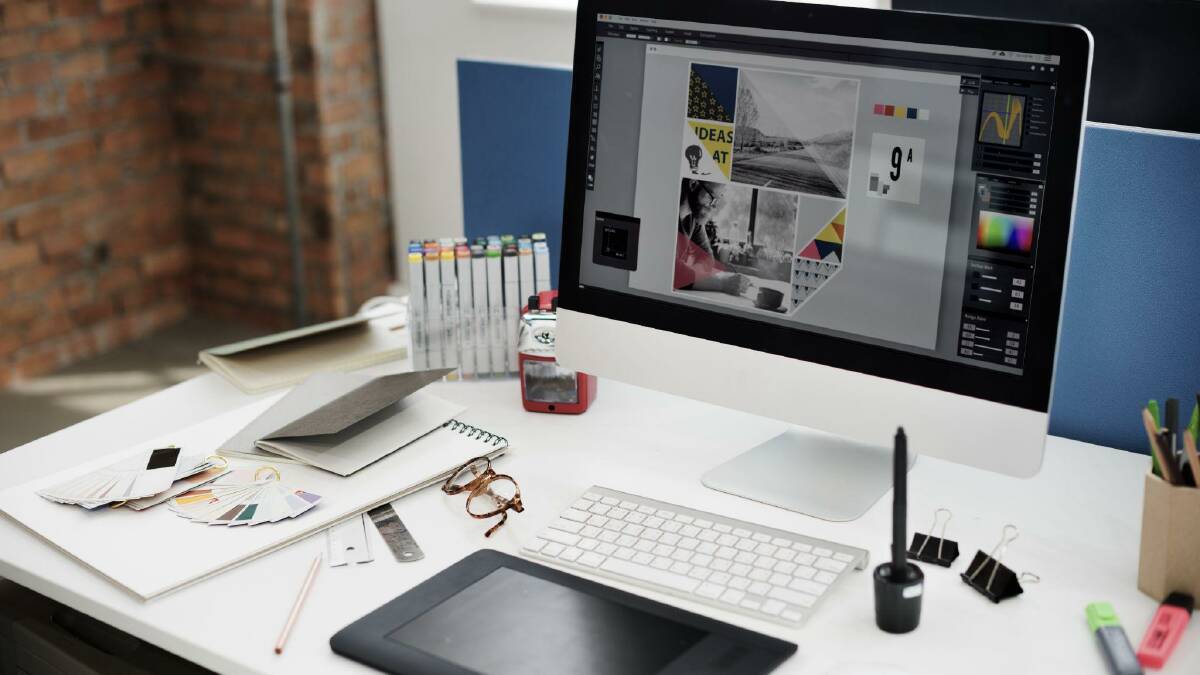Graphic design guide: How to go from hobbyist to professional

This is branded content.
So, you want to turn your favourite pastime into a professional pursuit.
Over the past few years, the world has gone more digital than it ever has before. We're doing everything from working online to dating online so it makes sense to pursue a career that is firmly planted in the digital world.
Here, we explore how to turn your graphic design hobby into your livelihood.
Get educated
When it comes to forging a career in graphic design, education is everything. Taking a graphic design course is a fantastic place to start as it teaches you the fundamental principles and concepts to master the craft. However, if formal education is not the route you wish to take, rest assured, there are other avenues.
Graphic design utilises many different software platforms, so it's imperative you understand how to use them. From the different programs inside Adobe Suite to graphic design mainstay, Canva; ensuring you have sufficient knowledge across all will help you to impress future employers.
After all, between two candidates they're going to choose the applicant with advanced knowledge across the board.
Put together a portfolio
Whilst many careers require a solid resumé as a way to stand out amongst peers in their respective fields, graphic design favours a detailed portfolio.
Tailor it to the type of design you wish to do; for example, if your speciality is website design, fill your portfolio with examples of the top tier designs you have created to showcase your passion and your best work.
If design has simply been a hobby of yours prior to now, then crowd-source projects to do. This is superior to tasks you have created for yourself as it helps you to strengthen your skills and further your aptitude.
Copy and create
A way to grow your talent is to emulate others' work. Now, this doesn't mean you should sell this work as your own. In your personal time, teaching yourself new techniques by attempting to copy favourable designs is a great way to improve your skill set.
Not only will this better your technical expertise, but it will also teach you alternative creative methods that you have less familiarity with. You may find a new style that you prefer or an alternative speciality to present to potential clients and employers.
Copying alternative design styles also gives you the ability to tweak aspects you don't like or think you can better upon which in turn can create a whole new method.
Open yourself up to critique
One of the best ways to grow in a field is to open yourself up to criticism, after all in a creative field your work is likely to be edited and evaluated. Often within our own work, we are too close to notice problems that may be obvious to others so allowing peers or even superiors to view and analyse your design will in turn aid you as you are able to hone in on your craft and become a more skilled professional.
Remember that negative feedback is not a bad thing, remain open-minded and reap the benefits that come with this growth.
Experiment
Much like reproducing others' work in a bid to teach yourself new digital skills, it is so beneficial to experiment outside the style you favour the most.
Whilst it's fantastic to have a design style you enjoy, learning to leap outside your comfort zone and experiment with foreign methods is a fantastic way to teach yourself new skills whilst also potentially finding a new technique that you prefer.
If graphic design has been your hobby it's likely that you haven't challenged yourself with styles you dislike or find more difficult, but the ability to showcase different methods makes you an attractive candidate to potential employers whilst also setting you up for the real world, so often you will have to create graphics that go against your personal taste in order to appease the client; so practising this skill sets you up well.
Teach yourself to problem solve
A large part of working in a creative field is teaching yourself how to problem solve in varying capacities. Be it, the client wants to take the project in a different direction to the one you envisioned, or perhaps a more current difficulty is the communication issues that come with working remotely.
Learning how to roll with the punches and find solutions on the spot are integral to a design role. Communicating your vision for a project initially minimises any conflicting views between client and designer later on.
Similarly, utilising programs like Zoom, Google Meet and Slack as much as possible to ensure that there is clear communication at every step of the process is essential.
Whether you're reaching out to others within your field, learning how to adapt to different styles, or dealing with the restraints that come from working remotely, by following this guide you're sure to have a successful and thriving career as a graphic designer.


